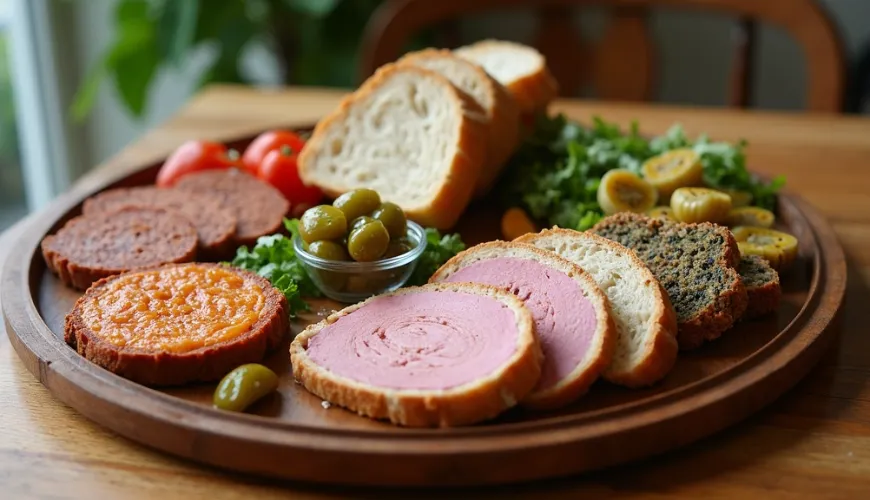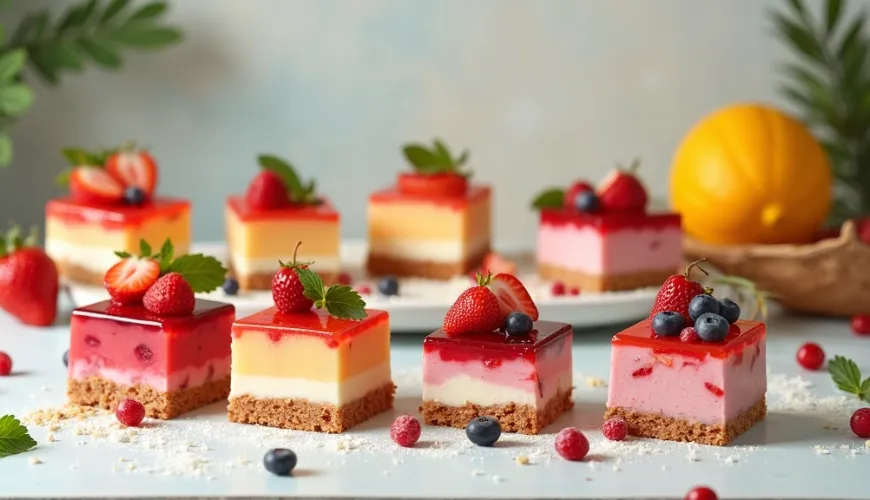
How to Make a Perfect Jelly Cake That Will Impress Your Guests

Jelly Cake - A Colorful Delight for Both Eyes and Taste Buds
Few desserts can elegantly combine aesthetics and taste quite like a fruit jelly cake. Delicate layers of sponge cake, airy cream, fresh fruit, and finally, a shiny, transparent layer of jelly—all together create not only a festive appearance but also a harmony of flavors that delights on any occasion. Whether it's a birthday, wedding, or just a Sunday coffee gathering, a cake with fruit and jelly is a surefire choice.
Many avoid jelly on cakes because they feel the preparation is complex or that it can easily go wrong. The truth is, however, that jelly on a cake is much easier to prepare than it seems—especially if you know what to watch out for. This article is all about how to make a jelly cake that not only looks great but also tastes delicious.
Why Add Jelly to a Cake?
Jelly isn't just about appearance, though it's true that its shiny surface gives any dessert an elegant touch. Primarily, it serves a practical purpose: it keeps the fruit in place, protects the creamy layer from drying out, and adds another texture to the cake—gently elastic and refreshing. If you use fruit jelly, you also add a flavor layer that enhances the sweetness and freshness of the fruit.
And what about that first impression! When a fruit cake with shiny jelly is brought to the table, guests usually pay attention. Such a dessert simply shows that someone has put in the effort, that it's a special moment.
How to Make Jelly on a Cake That Truly Succeeds
The key to success is choosing the right gelling agent. The most commonly used is gelatin—either powdered or sheet. Both options have their advantages. Powdered gelatin is accessible and easy to measure, while sheet gelatin often has a finer texture and is popular in professional kitchens. For vegans, there is an alternative in the form of agar, which is derived from seaweed and sets at lower temperatures.
For preparing basic jelly on a cake, all you need is gelatin, fruit juice or syrup (such as raspberry, orange, or apple), or water with a bit of lemon juice and sugar. It's important never to boil the gelatin—just heat it enough to dissolve. Too high a temperature destroys its effectiveness.
Then it's necessary to let the jelly cool slightly, ideally to room temperature, before pouring it over the cake. If it's too hot, it might damage the cream or soak the sponge base. Patience really pays off here.
Flavor Combinations - When to Choose Which Fruit
Not all fruit is suitable for being covered with jelly. Pineapple, kiwi, or papaya contain enzymes that prevent gelatin from setting. If you still want to use them, they need to be heated first—such as briefly boiled. On the other hand, strawberries, blueberries, raspberries, grapes, or peaches are ideal choices, and their flavor beautifully complements the gentle jelly.
Especially popular are layers of fresh seasonal fruit that match the flavor of the cake and the colors. In summer, strawberries and blueberries stand out, in autumn plums and pears, in winter oranges or pomegranates.
Everyday Scenario - A Birthday with Flair
Let's imagine a situation every parent knows—a child's birthday is approaching, and you want to prepare something truly festive. The usual chocolate cake is a safe bet, but this year calls for something extraordinary. The choice falls on a jelly cake with fruit: light sponge, curd cream, and on top a colorful mix of fruit—strawberries, blueberries, kiwi. Plus, transparent jelly made from apple juice.
When the cake is brought to the party, children gather around the table eagerly waiting for it to be cut. And when the first slice with a shiny layer of colorful jelly appears, it's clear it was a hit. Refreshingly tasty, visually striking—and also light, perfect even for summer celebrations.
Such experiences show that a cake with jelly isn't just a pastry chef's whim but a full-fledged part of home cooking.
Tips and Tricks for a Perfect Result
While the basic principles for preparing jelly are simple, there are a few details that can decide whether the result will be average or absolutely exceptional:
- Use clear juices—apple or white grape juice are ideal for ensuring a transparent effect. If you want a rich color, opt for raspberry syrup or blueberry juice.
- Let the jelly slightly thicken before pouring—if you pour it completely liquid, it may seep into the cream or sponge. A semi-liquid consistency ensures even spreading.
- Ensure a flat surface—the cake should always be placed on a flat surface in the fridge so that the jelly sets evenly.
- Don't be afraid of creativity—try adding edible flowers, mint, or even decorative layers of different types of jelly to create striking stripes.
Jelly Cake as an Expression of Care and Imagination
Perhaps it's because preparing a cake with fruit and jelly requires a bit more planning that the resulting effect is all the more impressive. Unlike a regular cake, it's clear that effort was made—and that counts. As the famous American chef Julia Child said: “No one is born a great cook. One learns by doing."
And this is exactly true for jelly cakes. Each attempt takes you further, each new fruit or combination teaches you something new. And the best part? With each subsequent cake, not only does your pastry art grow, but also the joy of those who savor it.
Traditional recipes, modern ingredients, and a touch of imagination—when combined, they create something more than just a dessert. They create a story on a plate that is told with every bite. So why not start one today?

